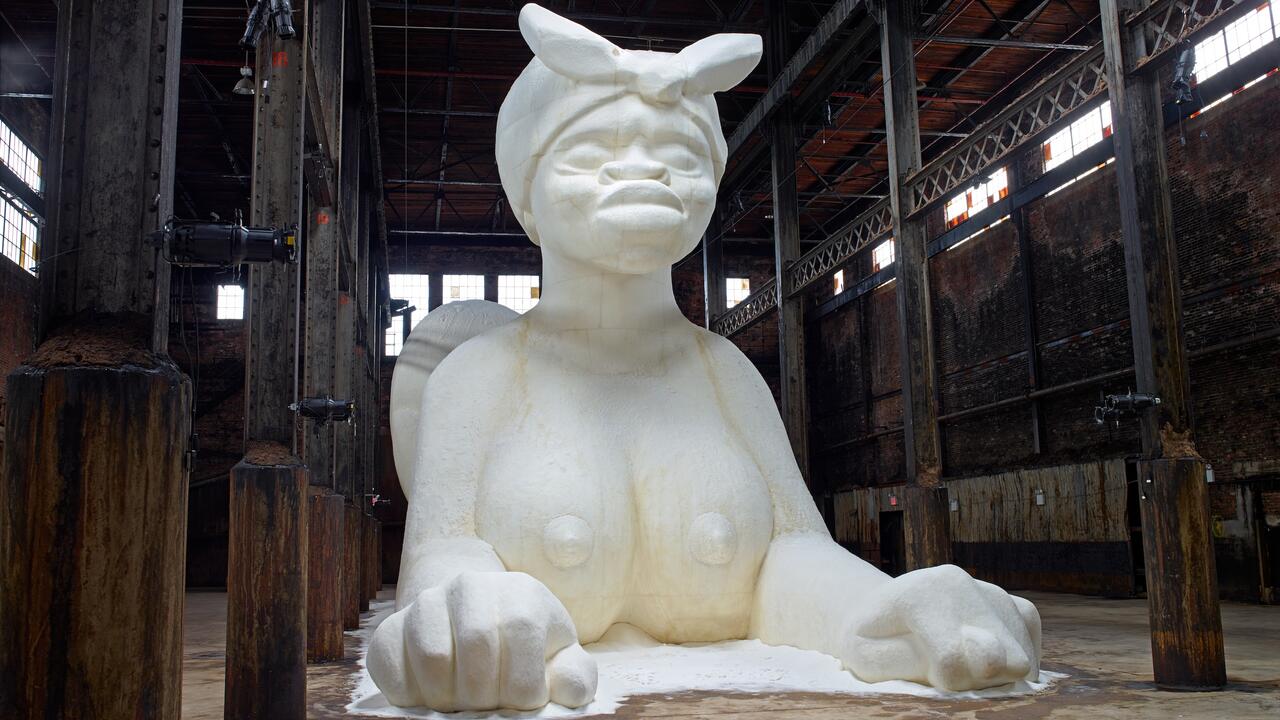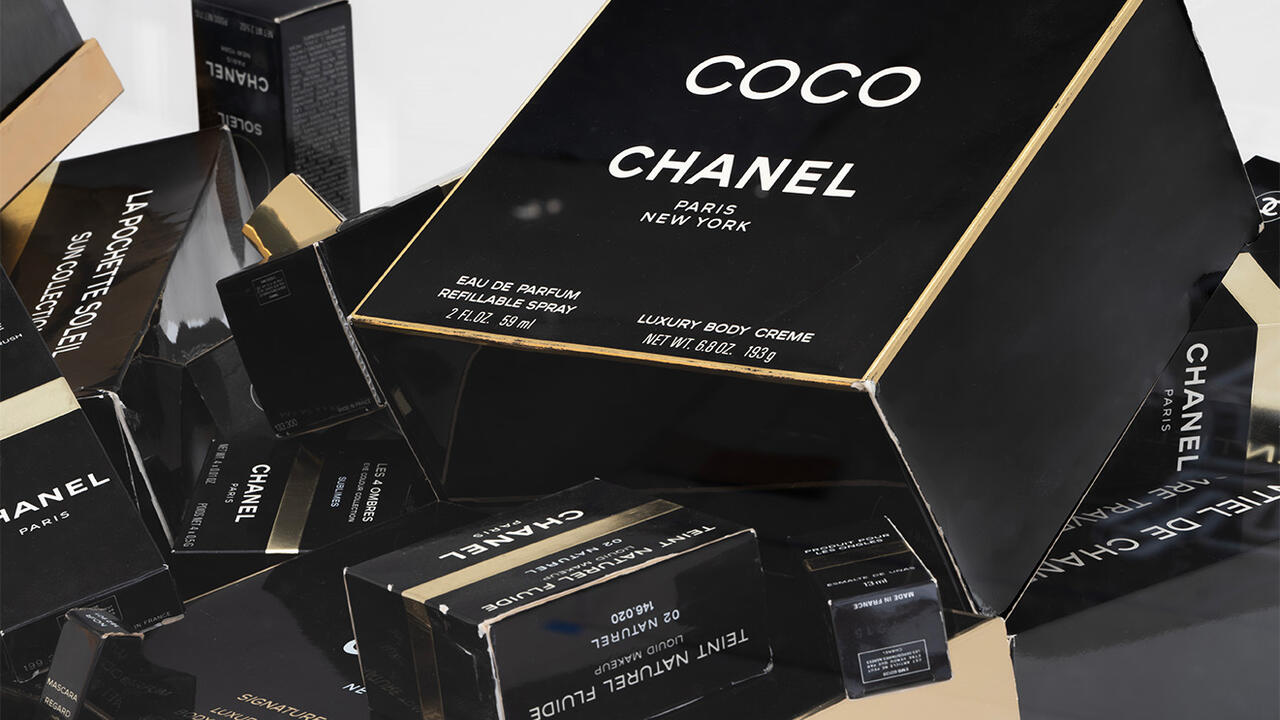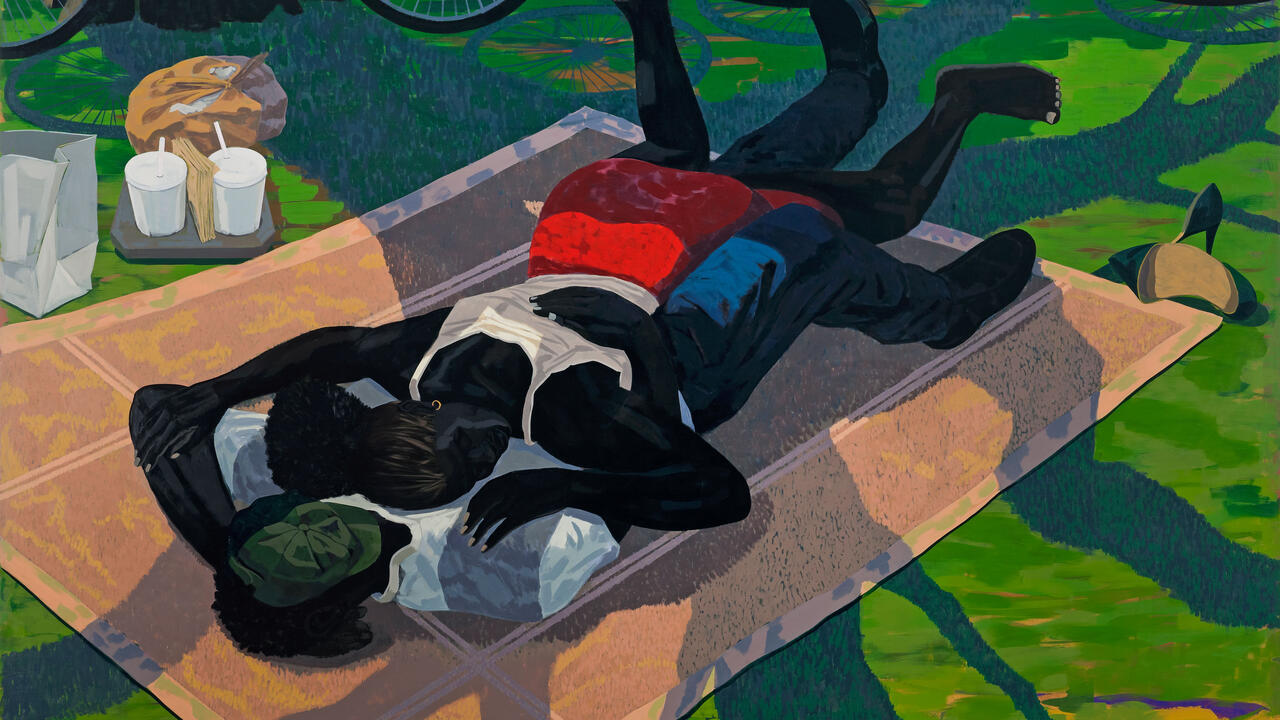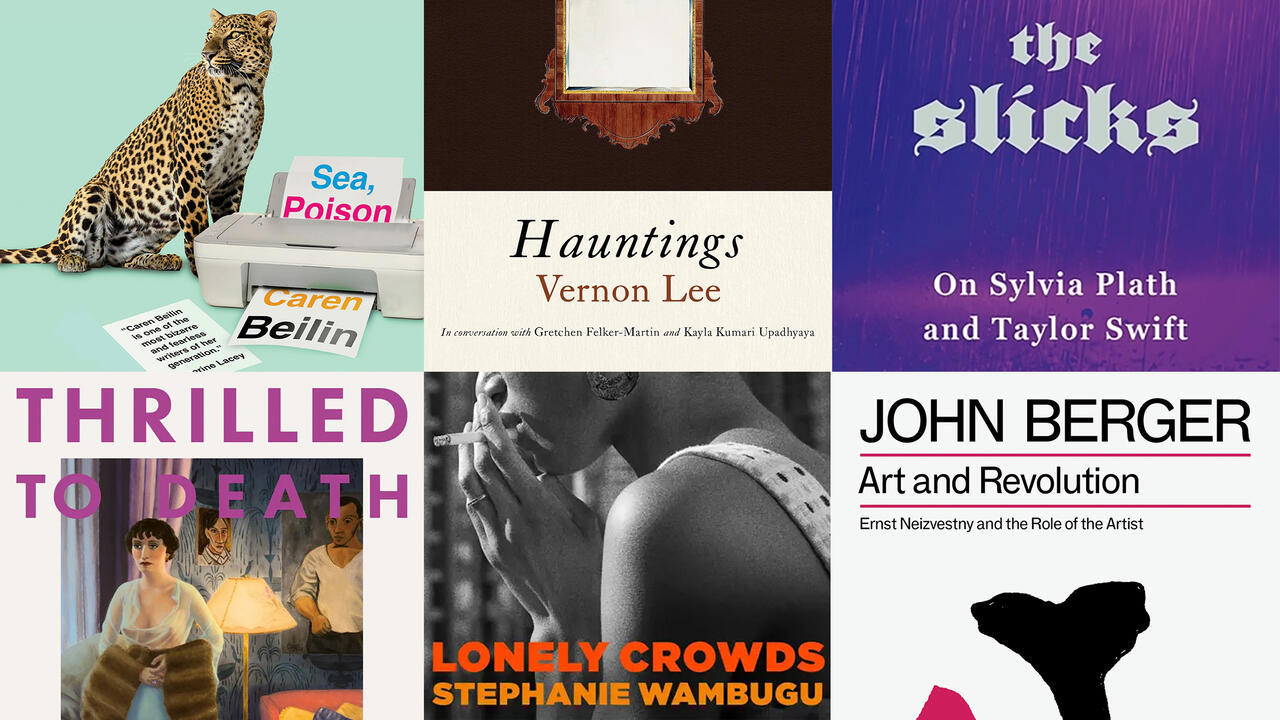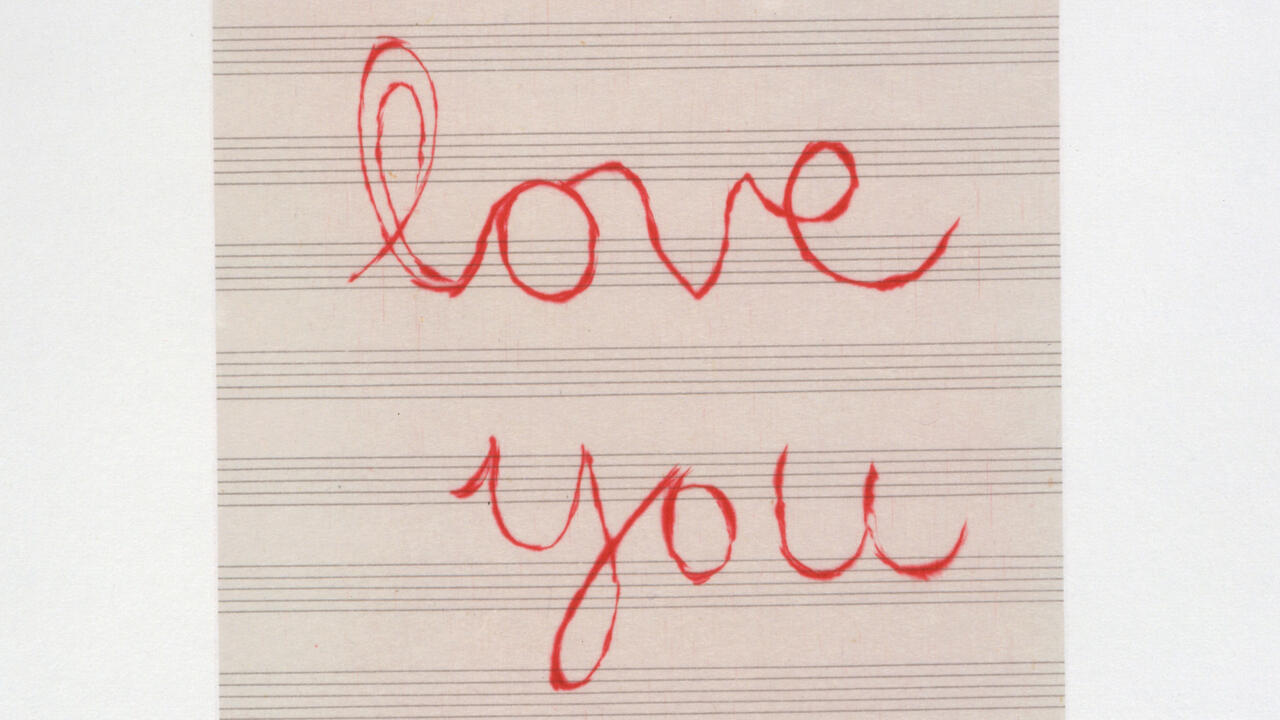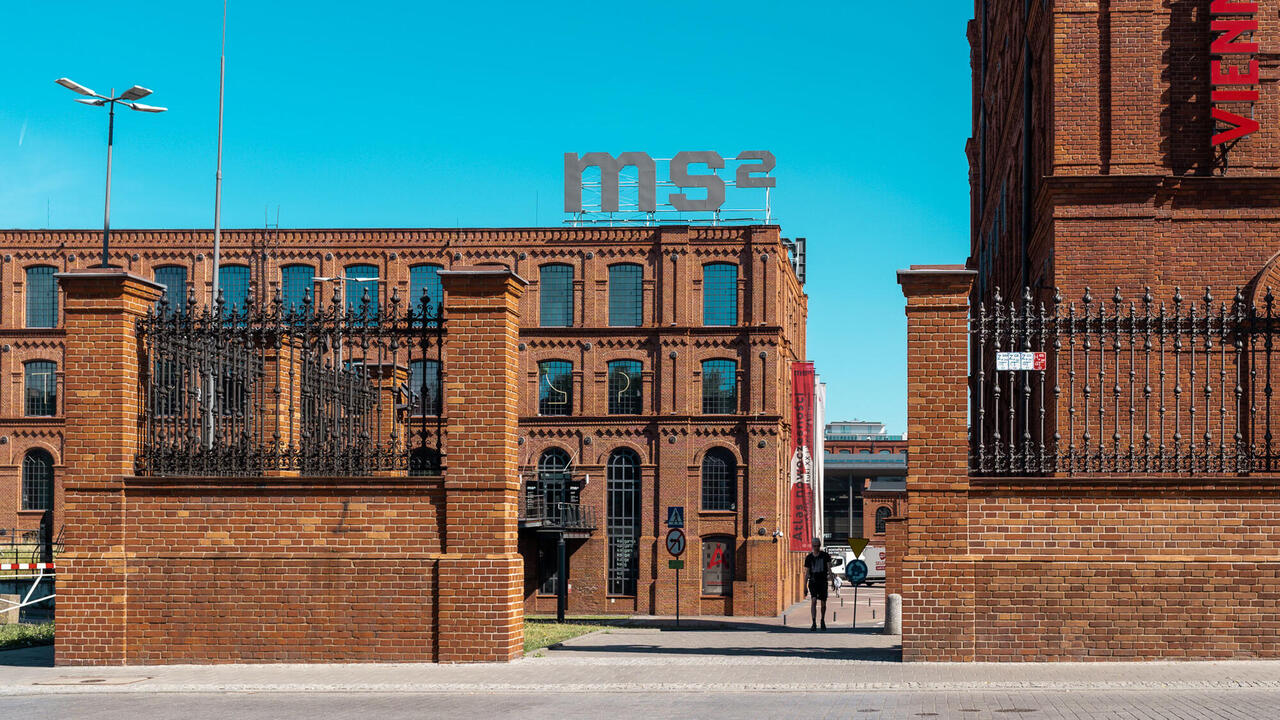Missing Galleries Amid Covid-19? Check Out these Exhibitions Behind Closed Doors
Each day for the next month, we’ll highlight a different exhibition that’s affected by the Covid-19 crisis
Each day for the next month, we’ll highlight a different exhibition that’s affected by the Covid-19 crisis
This page will be updated daily throughout the next 30 days, so check back here regularly. You can also follow the series on Twitter and Instagram at @frieze_magazine.
Paul P, ‘Centaurs on the Beach’
Franco Vaccari, ‘Migrations of the Real’
Akeem Smith, ‘No Gyal Can Test’
Sarah Lucas, 'Honey Pie'
Gilbert & George ‘The Great Exhibition 1971-2016’
'The Sky is Leaden in the South: An Evocation Through Grey'
Luiz Roque, 'Republica'
Reinhard Mucha, 'Schnee von gestern – Auszüge aus dem großen Kalender III, 1964-1975'
Tony Cokes, 'If UR Reading This It's 2 Late'
Jennifer West, 'Future Forgetting'
'This Corrosion'
Sean Landers, 'Northeasters'
Simphiwe Buthelezi, 'Freedom Domain'
Linder, 'Linderism'
Rachel Rose
Yael Bartana, 'Patriarchy is History'
Hannah Black, 'Ruin/Rien
'Personal Effects'
Juliette Blightman, 'A Carpet for Your Somersaults'
Jeremy Shaw 'Phase Shifting Index'
Another Eye: Women Refugee Photographers in Britain after 1933'
'Spaghetti Club'
Forrest Bess
Ida Applebroog, 'Mercy Hospital'
Ella Kruglyanskaya, 'This Is A Robbery'
Andreas Eriksson, Mapping, Memories, Tracing Time
Rafal Zajko, 'Resuscitation'
‘Gene Beery: Transmissions From Logoscape Ranch’

Paul P, ‘Centaurs on the Beach’
Maureen Paley, Morena di Luna, Hove
I was looking forward to the train to Brighton to see the artist’s latest portraits. The early spring weather – cloudy and wet in coastal England – is well-suited to these ethereal paintings of young men and the architecture of two divergent Venices (Italy and California). Now the show, like many of Paul P’s subjects, belongs to a lost world, one we may someday regain but which remains, at present, decidedly out of reach. The ache of longing that persists in these paintings is one even more familiar than usual, as I watch the flowers bloom outside my window with no one around to smell them.
– Andrew Durbin, Editor

Franco Vaccari, ‘Migrations of the Real’
P420, Bologna, Italy
In 2017, a telescope at the University of Hawaii detected the first interstellar object, named Oumuamua, passing through our Solar System. I’ve been obsessed with its viral image ever since. It’s not a photo, but a retrofuturistic impression created by an artist for the ESA/NASA space agencies. For his video Oumuamua (messenger who came from afar) (2020), projected in cinematic proportions on a wall of gallery P420, cult Italian video artist Franco Vaccari animated the same image, so that the mysterious asteroid moves slowly towards the viewer. From the 1970s onwards, Vaccari has generated an impressive series of ‘Exhibitions in Real Time’, as he titles them. Now that our lives and collective unconscious are shaken by a real-time close encounter with the unexpected and unknown, I seem unable to keep Oumuamua out of my head.
– Barbara Casavecchia, Contributing Editor

Akeem Smith, ‘No Gyal Can Test’
Red Bull Arts, New York
In looking through Akeem Smith’s archive the unacquainted might simply see a community centred around celebration; to those familiar, however, it is messy, personal and hierarchical, with loyalties, gossip, highs and lows, and knowledge of where everyone ended up. This interwovenness, much like what is found in the depths of any archive, challenges the still common idea that there is any one, primary history to which these regional or personal histories are secondary.
– Kenta Murakami, Curator
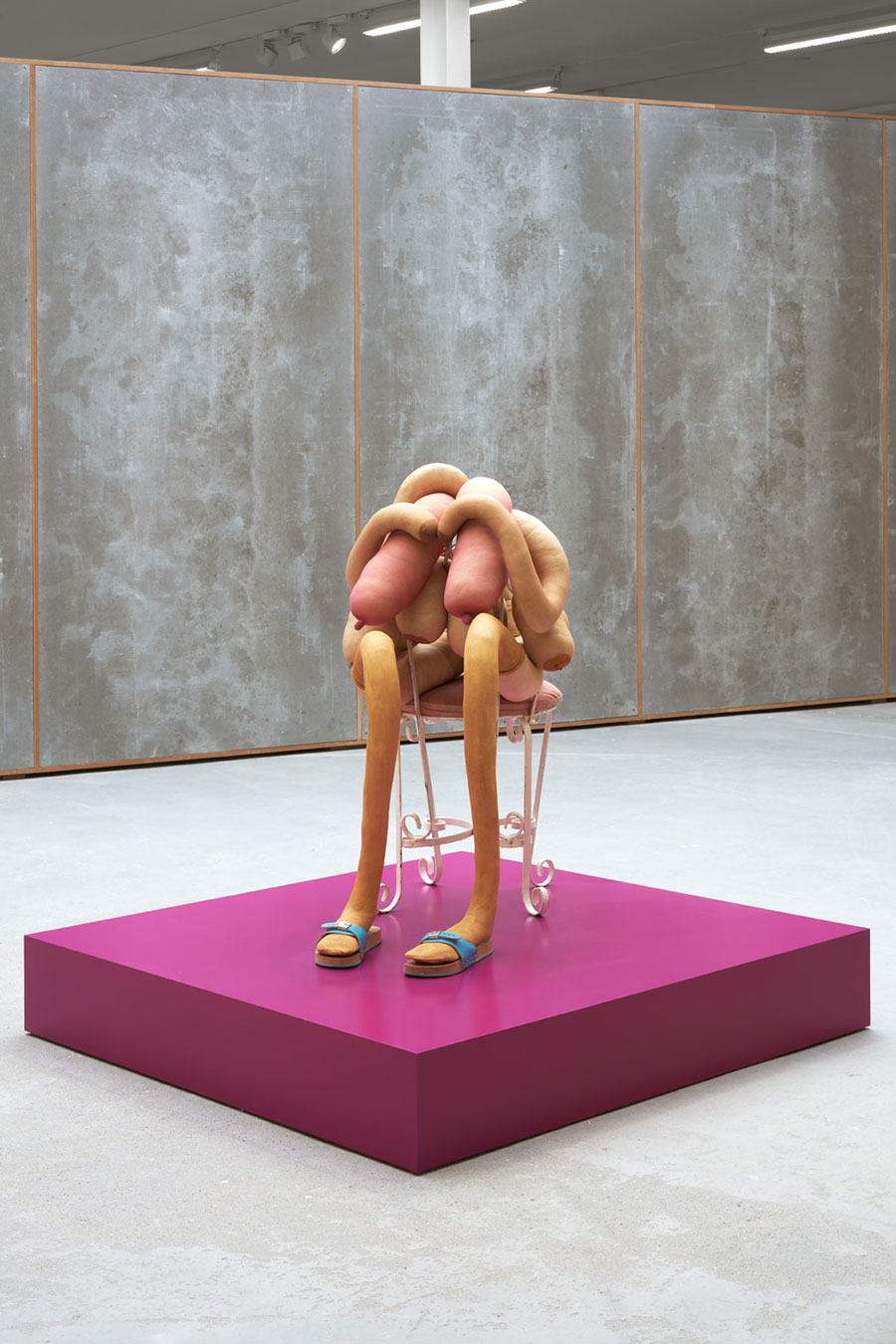
Sarah Lucas, 'Honey Pie'
Sadie Coles HQ, London
One ruddy-gussetted, another orange-plinthed, writhing or sprawling around modernist chairs, Lucas’s bunny sculptures have evolved by way of her tangling ‘NUDS’ series and the palette of Franz West. Displaying lust, vulnerability, assertiveness, polygendered anatomy and a confusion of fuck-me/don’t-touch-me vibes, ‘Honey Pie’ is a slouching chorus to the sexual politics of the moment
– Hettie Judah, Contributor
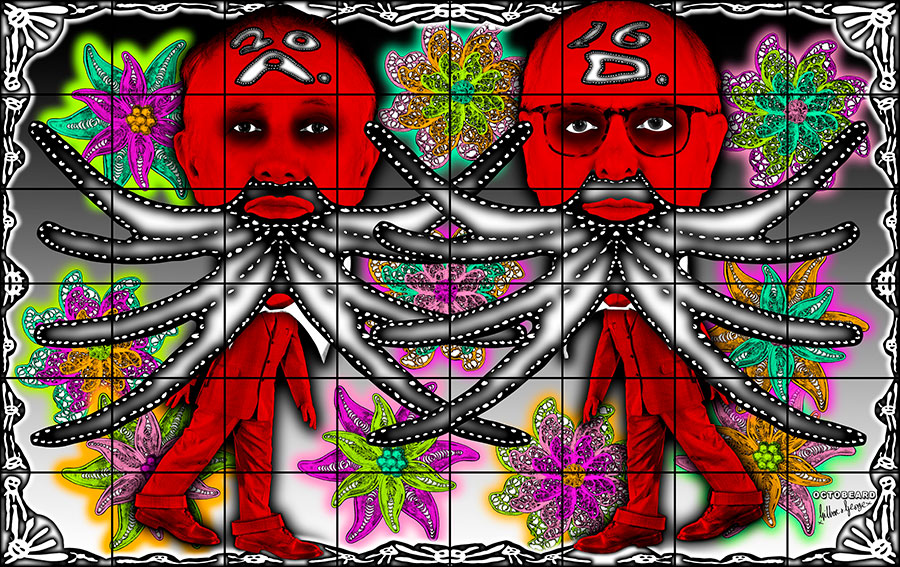
Gilbert & George, ‘The Great Exhibition, 1971-2016’
Kunsthalle Zürich
When I met Gilbert & George before the opening of their show at Kunsthalle Zurich, the first thing I noticed was that the two have never had a beard. In fact, their clean-shaven faces are a trademark. As self-declared conservatives and humanists, the facial design of Gilbert & George represents the values of Enlightenment and liberalism. Since the late 1960s, they have challenged Western values through nifty vulgarity. Hence, when they depict themselves as hyper-bearded monsters in the photo montage Octobeard (2016), they draw a sharp line between art and life.
– Jörg Scheller, Contributor
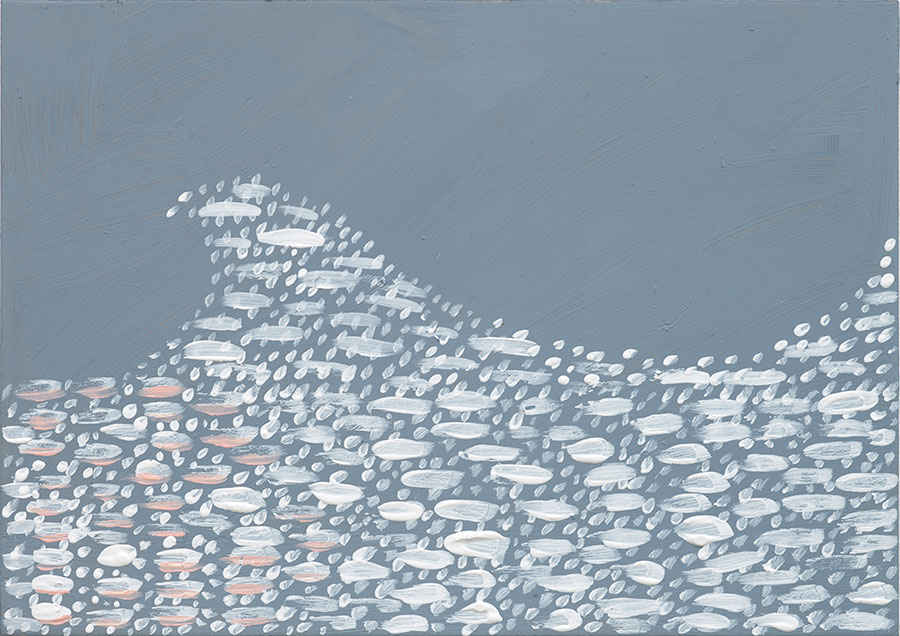
'The Sky is Leaden in the South: An Evocation Through Grey'
Hollybush Gardens, London
Grey is an experience. Grey is the colour of war and the colour of industry. It is the colour of the photographic age. Grey is the sky, the sea, the weather, the flickering of shadow. The secret space in between that holds everything and nothing.
‘The Sky is Leaden in the South: An Evocation Through Grey’: a group show featuring works by Andrea Büttner, Helen Cammock, Lubaina Himid, Ellen Lesperance, Liliana Moro, Ruth Proctor, Charlotte Prodger and Lis Rhodes
– Lisa Panting, Co-founder and Director

Luiz Roque, Republica
Pivô, São Paulo
Luiz Roque lives above Pivô, where his solo show ‘Republica’ was suspended a few days before the opening. His latest film, Zero (2019), now plays continuously in Pivô’s storefront as a prologue to the exhibition. In it, a lonely dog flies over the desert in a private jet. The horizon is interrupted only by an oasis-like skyline of futuristic high-rises. The contrast between the dust of the desert, the shining and spotless glass of the apparently uninhabited buildings and the animal adrift – perhaps the last living creature on earth – is a disturbing warning of the consequences of political and economic decisions made over the past century. The lack of a human presence in the film insinuates that our species has set a course towards a new ’zero’ that can either be a total revaluation or even extinction.
– Fernanda Brenner, Contributor

Reinhard Mucha, Schnee von gestern – Auszüge aus dem großen Kalender III, 1964-1975
Galerie Bärbel Grässlin, Frankfurt
Mucha’s ‘Schnee von Gestern – Auszüge aus dem Großen Kalendar III’ (Snows of Yesteryear – Excerpts from the Big Calendar III, (1964-1975/2020)) encompasses 436 DIN A4 sheets in plastic sleeves with drawings, photographs, writings and objects from the artist’s archive, documenting four different stages in his life before he began his art studies. Pressed plants from Mucha’s school days are placed next to photographs from his time in the military. Documents from his apprenticeship as a blacksmith are accompanied by photographs taken during his time as a nurse in a psychiatric institution. Schnee von Gestern not only provides an insight into Mucha’s own biography, but also into the history of the young Federal Republic of Germany
– Marina Rüdiger, Contributor

Tony Cokes, If UR Reading This It's 2 Late'
Carpenter Centre for the Visual Arts, Boston
I cancelled my trip to Boston to see Tony Cokes’s survey at the Carpenter Center, ‘If UR Reading This It’s 2 Late’ – a title that turned out to be prophetic – but this central work, which was screened at New York’s Greene Naftali Gallery last year, is seared into my mind. Its simple, syncopated slideshow of white text on red and blue backgrounds tells the story of the US ‘extraordinary rendition’ and ‘enhanced interrogation’ program during the George W. Bush administration – smokescreens for illegal abduction and torture. An incongruous soundtrack by Britney Spears and Metallica mimics the music military interrogators used to keep detainees awake for days on end. Cokes’s reference to ‘Disco Inferno’, in one slide, elides the catchy 1976 single by The Trammps with the literal hell of Guantanamo and Abu Ghraib, and turns the benign corporate format of the PowerPoint into a blaring alarm.
– Evan Moffitt, Associate Editor

Jennifer West, 'Future Forgetting'
JOAN, Los Angeles
In Jennifer West’s gorgeously degraded 16mm films, time passes frame by speckled, scratched and double-exposed frame. Her exhibition, ‘Future Forgetting’, at JOAN in downtown Los Angeles, is especially poignant: 16mm footage of Los Angeles’ 6th Street Bridge, just days before it was torn down in 2016, re-exposed to river water in 2019; flatscreen monitors, on the floor, repurposed as tables for the salvaged river detritus that appears on screen.
– Jonathan Griffin, Contributing Editor
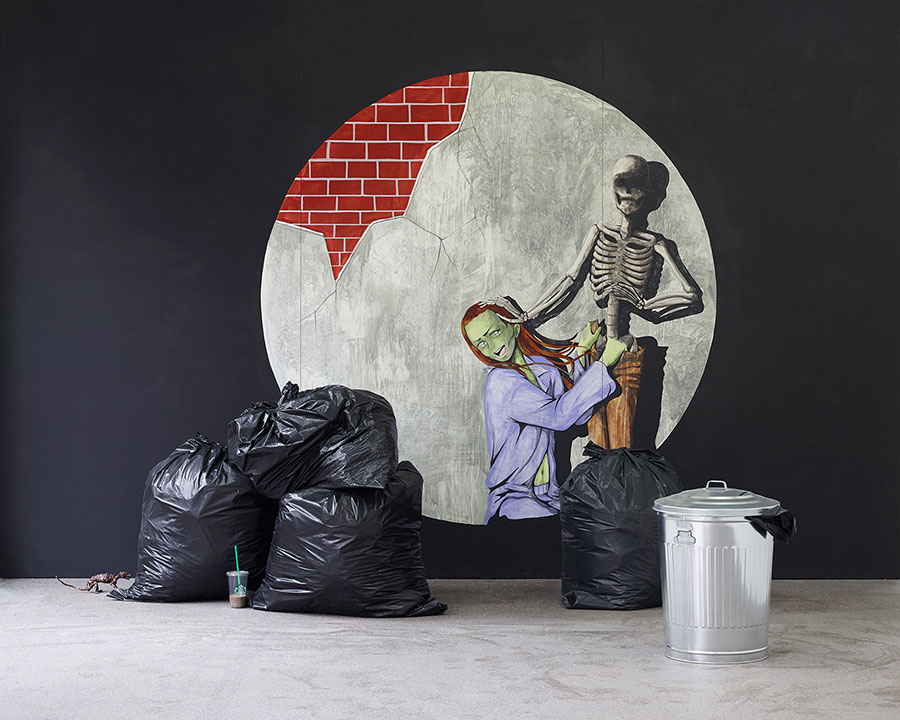
'This Corrosion'
Stuart Shave Modern Art, London
In the group show ‘This Corrosion’, which would have been open until May, pale emerald and silvery acrylics feign a figure reaching for a skeleton’s hipbone. A rat scurries between a dustbin and decaying Starbucks iced coffee. Late medieval technical sublimity bleeds into 1980s Japanese, fairytale manga, like a heart-melting, transtemporal romance. It’s dark magic.
– Gabriella Pounds, Contributor

Sean Landers, 'Northeasters'
Greengrassi, London
If any artist was going to have their show postponed because of a plague, it’s Sean Landers: master of self-deprecating despair. Still This Guy (2020) is from his solo show at Greengrassi, which was closed before it opened. It was going to comprise five new paintings inspired by stock photographs of long-forgotten actors from the 1920s and ’30s. At a time of collective discombobulation, there is something proudly defiant about ‘Still This Guy’: like so many humans, a touch demented, longing to laugh, possibly about to sob. Send in the clowns.
– Jennifer Higgie, Editor at Large

Simphiwe Buthelezi, 'Freedom Domain'
SMAC, Stellenbosch
In South Africa, the dominance of lens-based work exploring identity has been met by other practices that are visually discontinuous but still invested in the urgencies of identity. Buthelezi’s work mines a seam of practice that has a rich tradition, including the 1970s and ‘80s assemblage experiments of artists like David Koloane and Lucas Seage, who trained under Joseph Beuys. I love the muted earth tones of Buthelezi’s work, and the simple elegance of this assemblage, which strikes a chord with its rich materiality.
– Sean O'Toole, Contributing Editor

Linder, 'Linderism'
Kettle's Yard, Cambridge
I like the audacity of adding 'ism' to the end of your name to suggest you're a movement or style. 'Linderism' is arch-style; punk-iconoclasm; jilted domesticity; black leather gloves; feminist cut-ups made from '70s pin-ups; and porn overlaid with enormous suggestive flowers. The catalogue for this survey at Kettle's Yard is one of the best we've received all year. I'm disappointed to miss the show in the flesh.
– Sean Burns, Editorial Assistant

Rachel Rose
Lafayette Anticipations, Paris
Rachel Rose’s exhibition opened a few days before the official confinement was announced in France, but I had already begun strict social distancing. I now regret missing the show, which contains new sculptures, among other works. I think back to Rose’s well-known video A Minute Ago (2014), which begins with footage of beachgoers in Siberia getting caught in a hailstorm. You can hear them shout in Russian as they race to shelter before the video swerves to found footage of Philip Johnson giving a tour of the Glass House. As nearly all of us have shifted from outdoors to confined interiors, both the phrase and the video itself now have an extra haunting quality.
– Aaron Peck, Contributing Editor

Yael Bartana, 'Patriarchy is History'
Galleria Raffaella Cortese, Milan
Yael Bartana’s video The Undertaker (2019) stages a fictional public funeral of weapons. The ritual-like march to the Lauren Hill Cemetery in Philadelphia echoes military aesthetics that worship violence and is accompanied by the sound of drumbeats. After walking through urban landscapes, the group of weapon carriers arrives at the cemetery and lines up in front of a burial site in order to dump their weapons into a freshly dug grave. With every shovel of soil that slowly covers the rifles, I’m wondering what other human failures will be buried in the future. Looking into an uncertain future, Bartana’s gesture of burying weapons is a lucid reminder of our very own nonachievements.
– Sonja-Maria Borstner, Editorial Trainee

Hannah Black, 'Ruin/Rien
Arcadia Missa, London
In Hannah Black’s current solo show ‘Ruin/Rien’ at Arcadia Missa, one of the windows of the gallery is bricked up, blocking the outside world. Pages torn from a book are sticking out, wedged between the bricks. The installation is called Bastille (2020), and the book is The 120 of Sodom (1785) by the Marquis de Sade, written while the libertine was staying at the infamous prison. The original manuscript was found by a protestor, tucked inside the cracks of the wall in the Marquis’s former cell. Bastille playfully nods at this anecdote while also evoking the pure formalism of minimalist sculpture: the claim that art means nothing, and that its power comes from lack of meaning.
– Justine Do Espirito Santo, Associate Director

'Personal Effects'
Rumpelstiltskin, New York
Hannah Wilke was diagnosed with cancer in 1986 – less than a decade after her mother’s own diagnosis in the late ‘70s. In an attempt to protect vulnerable parts of her body from the intense radiation therapy she received for her lymphoma, Wilke used two moulded pieces of lead alloy around her neck. The blocks, which appear both soft and rigid, smooth and hard, personal and industrial, were until recently on view in the exhibition ’Personal Effects’ at the project space Rumpelstiltskin in Brooklyn, New York. To look at these objects is to imagine how they might fit around one’s body and consider why their cold forms might be necessary. It is to mourn. They are sculptural residues of the pharmakon: that which is both a remedy and a poison. I wish I could look at them now in part because I can’t stop seeing them.
– Giampaolo Bianconi, Contributor
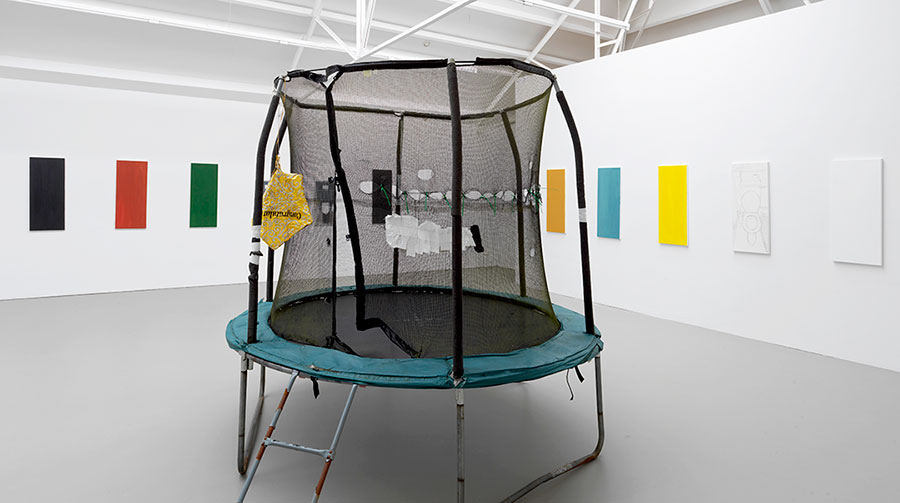
Juliette Blightman, 'A Carpet for Your Somersaults'
Galerie Fons Welters, Amsterdam
Bouncing on a trampoline seem to be the kind of activity that you can find on lists about ‘what to do in quarantine’. Central to Juliette Blightman’s exhibition at Galerie Fons Welters, which opened around the same time when the lockdown in the Netherlands started, is the trampoline from the artist’s daughter. While her daughter uses it to jump into her own world, the meaning shifts in the context of the show. Surrounded by drawings of toilets and monochrome paintings, the trampoline seems to be enclosed by painted bars. Named after Virginia Woolf’s feminist essay A Room of One’s Own (1929), Blightman’s trampoline installation speaks to the freedom of women and the urgency to take up space.
– Julia Mullié, Contributor

Jeremy Shaw 'Phase Shifting Index'
Centre Pompidou, Paris
Shaw has always liked to lull his audience into a false sense of security before dropping them into a pool of sensation. His solo exhibition at the Centre Pompidou is centred around seven large screen films, which can be viewed as one body or separately. They are linked by a pseudo-documentary narrative, depicting different sub-cultural future cults trying to reconnect to human empathy and spiritual ecstasy through movement. After 20 minutes, the sound and films sync into a united choreography, forcing viewers to pay attention as the room vibrates and then breaks into a psychedelic digital meltdown. This is only time I have ever seen an audience respond to an artwork with repeated applause at an opening. When I revisited the show, it had the same hypnotic effect. This is what immersion should feel like.
– Francesca Gavin, Contributor
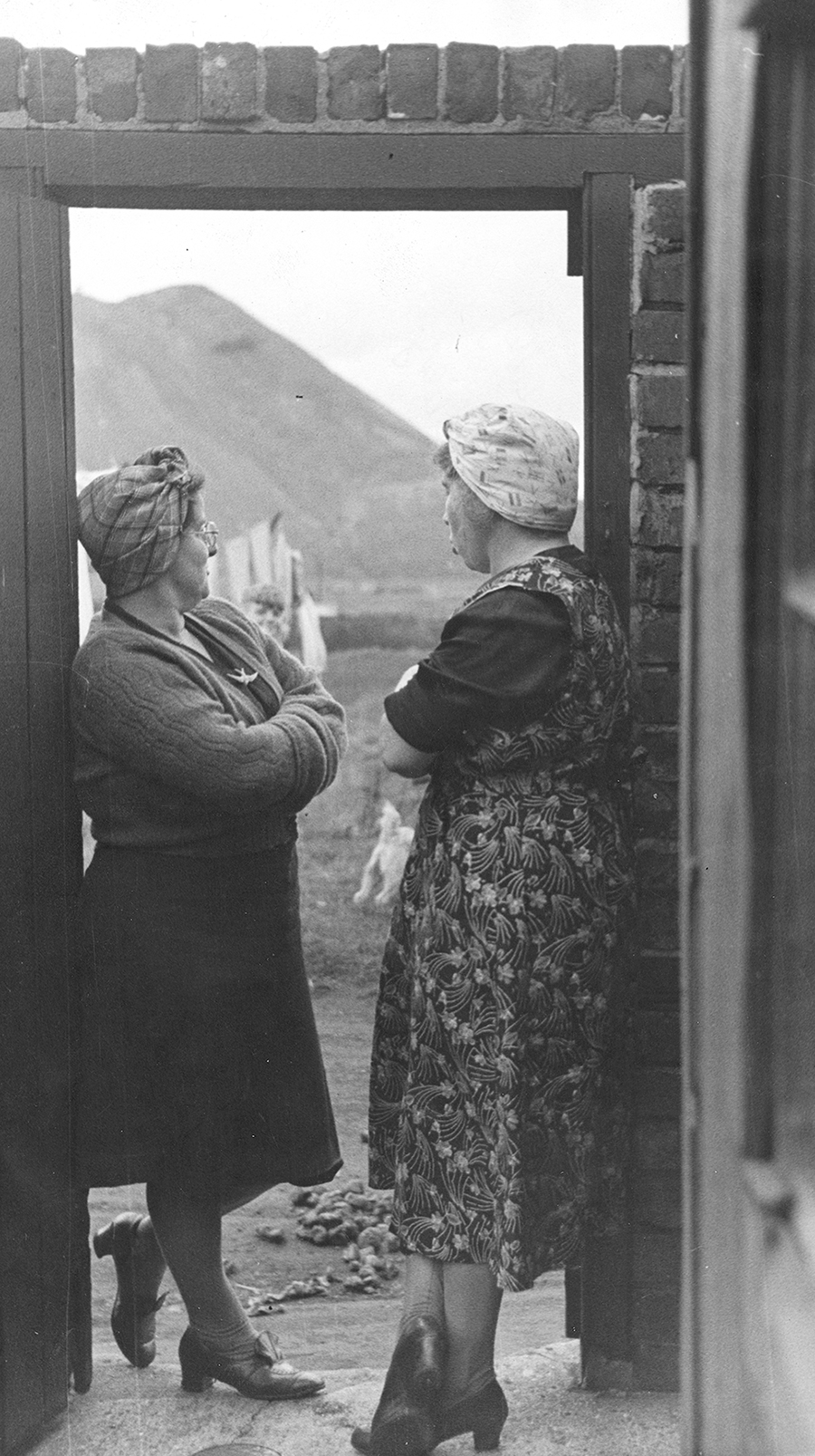
Another Eye: Women Refugee Photographers in Britain after 1933'
Four Corners, London
Two women lean through a bricked doorway, arms folded, ankles crossed, mid-conversation, looking quizzically, stoically, towards a mountain spanning the horizon. Taken by Elisabeth Chat, who fled to Britain from Nazi Germany in 1940, in a pit village in County Durham, the shot captures a certain softness and resilience spilling from the vista to the women’s faces. A boy grins mid-distance as if to say, ‘and now what?’
An online version of 'Another Eye: Women Refugee Photographers in Britain after 1933' is available to view here.
– Mimi Chu, Assistant Editor

'Spaghetti Club'
650mAh, London
Samuel Beckett cries over a Lego Barbie Dream House, a drawing of the most beautiful toilet in the world and depictions of Ted Cruz’s soul. Spaghetti Club is an after school club held in Grasmere Primary School in London every Thursday, 3.30 – 4.30pm led by artist and writer Michael Crowe. Initially conceived as a creative writing club, it has evolved into more of a loose set of exercises and activities, devised by Crowe, which involve things like drawing, dance, sculpture, photography, and more. This work collects a varied selection of those exercises which are witty, poetic and goofy.
We made a folder adventure with Spaghetti Club as part of AQNB's download-only art and music compendium ‘even my dreams don’t go outside’. Files are password locked and you have to puzzle your way through.
– Ella Fleck, Co-founder
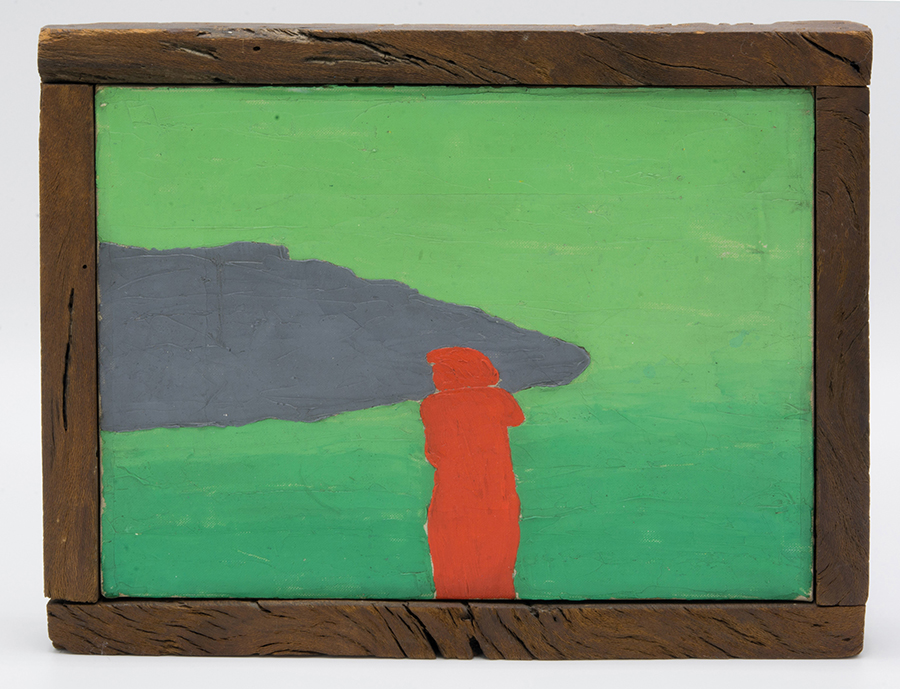
Forrest Bess
Fridericianum, Kassel
Bess’s paintings are brisk and bright; on first viewing, they give away little of the artist’s geographical self-isolation, the depth of his psychological research and the canvases' obscure signification. Only later do you intuit the artist’s symbology, his natural forms and the seclusion that informed them. Born in 1911, Bess began to experience hallucinations after returning from the army; he lived mostly on an island on the Gulf Coast and died in 1977. Like William Blake's or Hilma af Klint's, his paintings are in many senses visionary. This large exhibition at Fridericianum in Kassel, the artist’s first in Germany, now lasts until September.
– Pablo Larios, Senior Editor

Ida Applebroog, 'Mercy Hospital'
Freud Museum, London
In 1969, following a nervous breakdown, Ida Applebroog spent six weeks as an inpatient at Mercy Hospital in San Diego, where she made over a hundred drawings, combining Indian ink, watercolour and pastel on paper. Interlocking chubby, cellular shapes mutate into bodies, limbs and faces. Thick and thin black lines restrain washes of colour in psychedelic hues of lime green, orange, pink and yellow. Occasional pencilled names, phrases and questions create a disjointed narrative of enquiry and existential affirmation, like losing and finding yourself again and again.
– Philomena Epps, Contributor

Ella Kruglyanskaya, 'This Is A Robbery'
Thomas Dane Gallery, London
Ella Kruglyanskaya pitches her zaftig women and dynamic brushwork against deft, unexpected trompe l’oeil. A half rolled painting in her familiar style appears as a prop within a well-mannered still life of carrots in a glazed jar: an unfinished figure sprints along a canvas, fleeing the brushes that paint her: surrealist nods to René Magritte, inter alia. With ‘This Is A Robbery’, Kruglyanskaya’s second London exhibition with Thomas Dane, the artist swaggers into fresh and invigorating new territory.
– Hettie Judah, Contributor

Andreas Eriksson, Mapping, Memories, Tracing Time
Stephen Friedman Gallery, London
Andreas Eriksson describes his new series of tapestries as ‘existential landscapes’ – an idea that has taken on new resonance as swathes of the world adjust to life indoors. Made in collaboration with a team of weavers from one of Stockholm’s oldest textile schools and produced at the rate of only a few centimetres a day, these undyed yarns accrete time almost geologically, even as the finished works recall the shape-shifting, ephemeral blankness of snow.
– Amy Sherlock, Deputy Editor

Rafal Zajko, 'Resuscitation'
Castor Projects, London
It being the first day I was told to work from home, I skipped the opening of Rafal Zajko’s ‘Resuscitation’ at Castor Projects – despite the proximity of the gallery from my flat. The Poland-born, UK-based artist’s show seems almost uncannily fitting for this moment: playing with ideas of culture, nature, threat and reinvention through the image of artificial respiration. Named for the biblical resurectee, a glass dome protruded from the wall mounted Lazarus (2020), periodically filling with vape fumes. The largest sculpture, Amber Chamber (2020), looked like an iron lung designed by Pierre Cardin, and housed a resting figure, surrounded by golden heads of wheat: like an ancient vegetation god become man-machine, air-sealed for an unknown future. In whatever ensues after lockdown, I resolve to make more effort with the local.
– Matthew McLean, Senior Editor, Frieze Studios
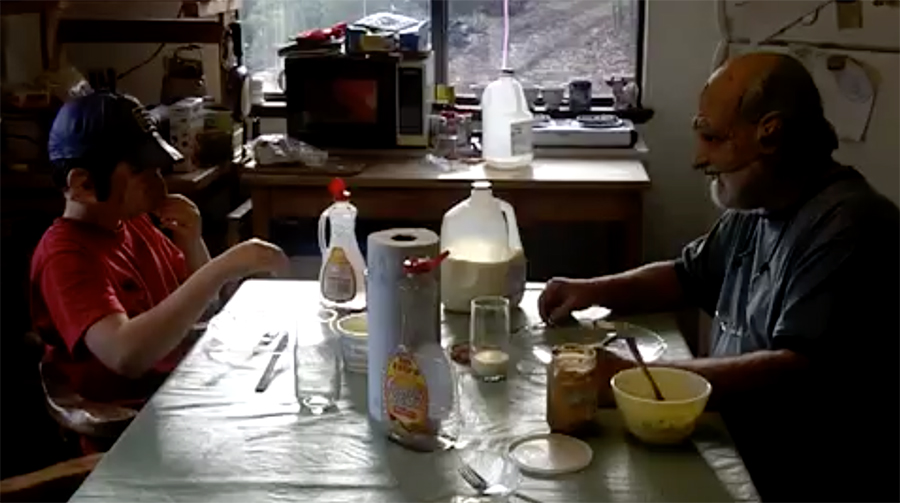
‘Gene Beery: Transmissions From Logoscape Ranch’ , organized with Nick Irvin and Jordan Stein
Bodega, New York
Gene Beery has been ’working from home’ for a while. Based in the remote foothills of the Sierra Nevada since 1978, Beery’s work – paintings, artist books, photography, and starting in the 2000s, a jolly web presence – has mostly been seen through secondhand transmission, rather than exhibition. This show considers his ranch and family life as essential subjects for his painterly language games, rooting his post-war conceptualism in rural Californian life. Videos such as Your Move (2000s) demonstrate that his art’s primary audience and co-conspirators have been his grandkids. Bored, trapped, and together, the Beerys make do, drawing amazement out of their breakfast table and the forest beyond it. In our new strange moment, with art’s market and social incentives ripped out from under us, I’m comforted by the thought that those losses wouldn’t affect what goes on in this video: art being made for its own sake, for the enrichment of living.
– Nick Irvin, Curator









